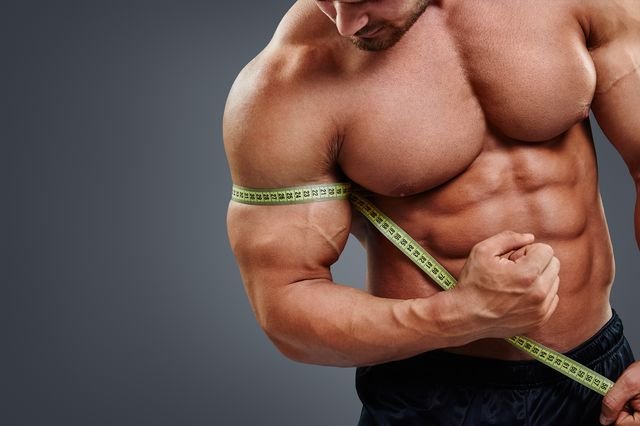As humans age, their bodies go through a multitude of changes. Gradually losing muscle mass is among the most noticeable changes, and it’s also one of the most frustrating. You could be the same number on the scale but feel softer, weaker, and more fatigued. It’s not just your imagination. Many people start losing muscle in their 30s, a condition called sarcopenia. Understanding why this happens can help you plan for the future, but it’s also essential to know how to counteract it.
Table of Contents
The Science Behind Muscle Loss With Age
Many people associate muscle with appearance and strength, but it plays many other roles in human health; they include insulin sensitivity, immune function, balance, and metabolism. Muscle loss can occur naturally with aging, but several factors accelerate the process. They include hormonal shifts, reduced physical activity, poor nutrition, inflammation, and oxidative stress.
Growth hormone, insulin-like growth factor, and testosterone all decline with age, and these hormones collectively contribute to the development and maintenance of lean muscle. Many adults become less active over time, and sedentary lifestyles contribute to faster muscular atrophy. Older adults frequently consume fewer calories and less protein overall. Increased oxidative stress and chronic inflammation can hinder regeneration and even damage muscle fibers.
Hormones: The Silent Muscle Saboteurs
Hormonal decline is a frequently overlooked reason for age-related muscle loss. Testosterone plays a crucial role in this, as it influences energy levels, helps regulate fat distribution, and supports the synthesis of muscle proteins. Testosterone levels naturally decline in both men and women as they age.
However, testosterone therapy is available. Adults who experience low libido, muscle wasting, fatigue, and other symptoms of low testosterone can utilize this therapy to restore their hormonal balance. Testosterone replacement therapy (TRT) is a viable option with appropriate medical supervision, making it easier to boost overall vitality and rebuild lost muscle mass. When combined with proper nutrition and strength training, older adults can utilize TRT to regain their strength and muscle mass more effectively than through lifestyle changes alone.
Signs You Might Be Losing Muscle Mass
Disappearing muscle isn’t always immediately obvious. The process can take time, and it’s harder to notice if your weight stays constant. However, there are early warning signs you can be mindful of. If you want to take action before you lose significant muscle, keep an eye out for:
- Fatigue, aches, and reduced stamina
- Slower metabolism and difficulty staying lean
- Carrying groceries, climbing stairs, and other everyday tasks tire you quickly
- Your wardrobe fits more loosely around your thighs or arms
- You feel generally weaker, even with the same routine
How To Fight Back and Rebuild Muscle
Aging may be inevitable, but not every aspect of it is unavoidable. Muscle loss can be prevented and, to some degree, even reversed. With the right mix of strategies, you can increase lean mass, regain strength, and feel better than you have in recent years.
1. Strength Training Is Non-Negotiable
Resistance training is the most effective method to stimulate muscle growth. Schedule two or three sessions per week that target every major muscle group with bodyweight, physical weights, or resistance bands. Start with light weights, and increase your intensity gradually. Focus on form as much as weight. Include both isolation exercises, such as bicep curls, and compound exercises, like push-ups and squats.
2. Increase Your Protein Intake
Protein is vital for muscle growth and repair. As human bodies age, they get less efficient at protein processing; that means you need more of this macronutrient over time. Generally speaking, you should have around 0.7 grams of protein daily for every pound of body weight. Spread your intake evenly across your meals. Good protein sources include high-quality protein powders, legumes, dairy products, eggs, and lean meats.
3. Look Into Hormonal Support
It might be time to consult a medical professional if:
- You’ve tried nutrition and strength training without success
- You’re noticing other symptoms of low testosterone
Testosterone replacement therapy has helped thousands of people reduce fat, rebuild lost muscle, and enhance their energy levels. It’s instrumental when fundamental lifestyle changes aren’t enough to fix hormonal imbalances. An expert-guided program can be customized to fit your needs and be monitored for effectiveness and safety.
4. Stay Active Throughout the Day
Regular movement is just as important as structured workouts. Prolonged periods of sitting heighten the risk of insulin resistance, stiffness, and muscle loss. Take an hourly walking break whenever possible. When watching TV, do bodyweight squats or light stretches. Choose stairs over elevators whenever possible.
5. Prioritize Sleep and Stress Management
Workouts trigger muscle growth, but it doesn’t happen immediately; muscles actually grow during sleep and rest. Poor sleep and chronic stress sabotage your progress in two ways:
- Reducing testosterone
- Elevating cortisol, a catabolic hormone
Try to get between 7 and 9 hours of high-quality sleep every night. Practice yoga, meditation, and breathing exercises to manage your stress.
You Can Start Fighting Muscle Loss Right Now
Losing muscle mass is a common consequence of aging, but it doesn’t have to be your destiny. Combining smart nutrition, strength training, active living, and TRT or other forms of hormonal support can protect your muscles.

